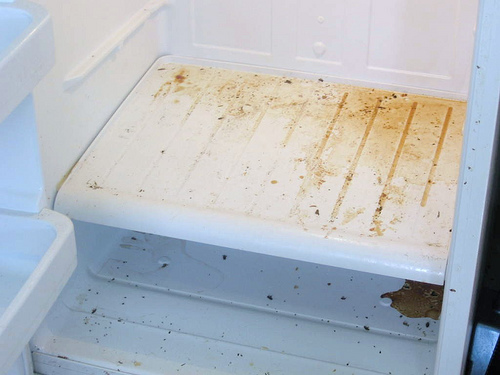September 6, 2010
Ottawa Maid Service: How To Clean a Refrigerator
As one of Ottawa’s more established house cleaning companies, we often like to share some of our philosophy when it comes to the fine details with respect to certain elements within the home. Most people don’t realize how much of a bacteria infestation can occur in places like a stove or a refrigerator. Recent studies by the Canadian Food Inspection Agency suggest that the refrigerator is the culprit in many food poisoning cases every year in Canada. In many cases, it’s as a result of proof preservation of food in the fridge (things like chicken and cheese), or because of minimal cleaning. We recommend doing a thorough top to bottom of any refrigerator at least once a month. We regularly do appliance clean outs for customers when requested, approaching a refrigerator with the same kind of deep cleaning philosophy as we do for the rest of the home. You don’t have to use harmful cleaning agents to eliminate bacteria in your refrigerator.
- A deep thorough cleaning of your refrigerator should start with the removal of all food from the fridge. Have a cooler or another fridge on hand while you do to ensure that none of the food you have in your fridge goes bad while you’re cleaning it.
- Once all the food has been removed, take out all of the removable components of the refrigerator. Meat and vegetables drawers – plastic coverings for places like the condiment or butter tray, and any shelving. Soak this all in your kitchen sink in hot water with regular dish soap.
- Create a solution that is 1/2 hot water and 2 tablespoons of baking soda. Use a rag or sponge, and thoroughly wipe down every surface area on the inside of the refrigerator, especially corners and bases. Baking soda can be your best friend when it comes to a fridge. It has many practical and valuable applications – not only for the cleaning, but also for removing odors inside of it when you’re not cleaning it. Once you’ve given the inside a good once over, rinse out, and wipe down with a paper towel until dry. Little tip – if your fridge has a lot of sticky spills inside, you’ll want to loosen those up before applying the baking soda and hot water mixture. A good suggestion is to heat up a bowl of vinegar and place inside for about 5 minutes. The acidity will loosen any sticky stains or spills that you might have a hard time getting off.
- Using a clean rag or sponge, use hot water and dish soap to clean the rubber molding around the fridge and freezer door. This is a particular are where bacteria can fester.
When you put everything back, take a few items into consideration.Your fridge temperature should be between 38-40 degrees Fahrenheit. Cover all meats when stored inside the fridge, and be sure to clean up any spills right away – even if they’re just things like soda or juice. Proper fridge maintenance and cleaning can all but eliminate the presence of bacteria in your fridge. Questions? Ask us by contacting us or request an estimate.






